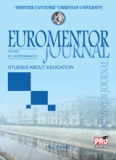STRUCTURE OF BI-TERM MONOMIALS IN ENGLISH FOR AUDIT AND ACCOUNTING
STRUCTURE OF BI-TERM MONOMIALS IN ENGLISH FOR AUDIT AND ACCOUNTING
Author(s): Oksana ChaikaSubject(s): Language studies, Foreign languages learning, Pragmatics, Computational linguistics, Accounting - Business Administration
Published by: Editura Pro Universitaria
Keywords: English for Audit and Accounting (English for A&A); language for specific purpose (LSP); monomial; bi-term monomial; binomial; polynomial; term;
Summary/Abstract: The given research aims at the analysis and description of the structure of two-component terms in English for Audit and Accounting as a language for specific purposes. Such two-component terms are referred to as bi-term monomials and English for Audit and Accounting plays a role of a selected professional language domain. The theoretical principles of the work provide a brief overview of languages for specific purposes and substantiate the need in introduction of the term‚ monomial’. The research is based on the findings that a great number of terms / term clusters are strictly set and/or irreversible in their structure, which is why such are addressed as monomials and polynomials rather than terms. The topicality of the research links to bridging the gap between academic findings and applicability of such in the digital solutions for any area in science, technology and business in future. Bi-term monomials are classified and analysed according to their structure and categories, to which the terms in the monomials belong. The material of the study is composed of 115 monomials (terms) selected from the Handbook of International Quality Control, Auditing, Review, Other Assurance, and Related Services Pronouncements validated by the IAASB in 2018.
Journal: Euromentor Journal - Studies about education
- Issue Year: XI/2020
- Issue No: 4
- Page Range: 137-153
- Page Count: 17
- Language: English

